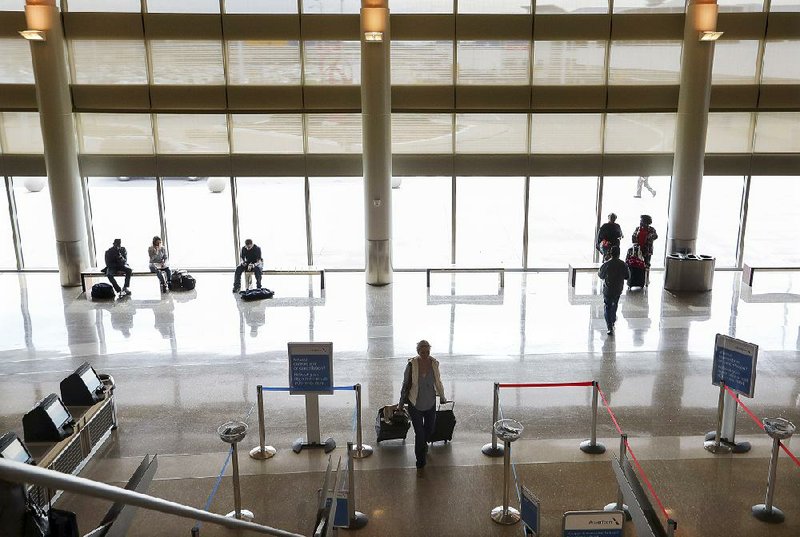Bill and Hillary Clinton National Airport has 5G data service available inside the airport for travelers to use, but it isn't the same 5G that the aviation industry says could interfere with the radio altimeters in commercial airliners.
Airport officials plan to let people know after a member of the Little Rock Municipal Airport Commission pointed out that 5G was available on his phone, less than a week after an announcement that the airport would be one of 82 airports nationwide that will have 2-mile buffer zones protecting them from 5G interference.
"As I sit here today, I have 5G," Patrick Schueck said during the commission's monthly meeting. "Does that mean the runways are not covered by 5G but the terminal is?
"I'm worried people are going to have the same question when they get to the airport."
Shane Carter, the airport's public affairs and governmental affairs director, said the 5G available in the airport isn't the same 5G that can interfere with the radio altimeters on airliners.
Verizon and AT&T agreed to scale back its rollout of the new, faster 5G networks in 46 markets set by the Federal Communications Commission. The telecoms agreed to put in place buffer zones around 82 airports, including Clinton National.
Had the buffer zones not been in place, the Federal Aviation Administration would have canceled thousands of flights over concern that the new 5G network could interfere with the radio altimeters in airliners. The instruments are used to measure the height the aircraft is above the ground. In the most sophisticated aircraft, the instruments can manipulate flight controls and thus are critical to landing the big jets in low-visibility weather.
Verizon Wireless offers 5G inside the terminal "using a different system that has been in place for years," Carter said.
The distributed antenna system that Verizon installed at the airport about six years ago at a cost of $1 million is designed to boost cellular coverage throughout the airport. Other providers can pay Verizon to use the service to boost their coverage within the airport, according to news reports at the time.
As part of the protections in place for airliners, the FAA banned the use of ultra low-visibility instrument landing systems available at some airports, including Clinton National, except for aircraft that have altimeters that have been "deemed reliable and accurate," according to Bryan Malinowski, the airport's top executive.
The system on Runway 22R, the airport's primary commercial service runway, can allow properly equipped aircraft flown by properly trained pilots to land in zero-zero conditions, meaning no ceiling and no horizontal visibility.
Traditional instrument landing systems allow aircraft to land with a ceiling no lower than 500 feet and at least a quarter-mile of forward visibility, Malinowski said.
He reiterated to commission members that the upgraded 5G service wouldn't immediately affect airline flight operations at Clinton National because the runway is closed "through the summer" for construction on an adjoining taxiway.
Still, Malinowski agreed with Schueck, who said he thought it would be prudent to "do some form of education.
"I feel like you're going to get a lot of questions, maybe even scare some people."

